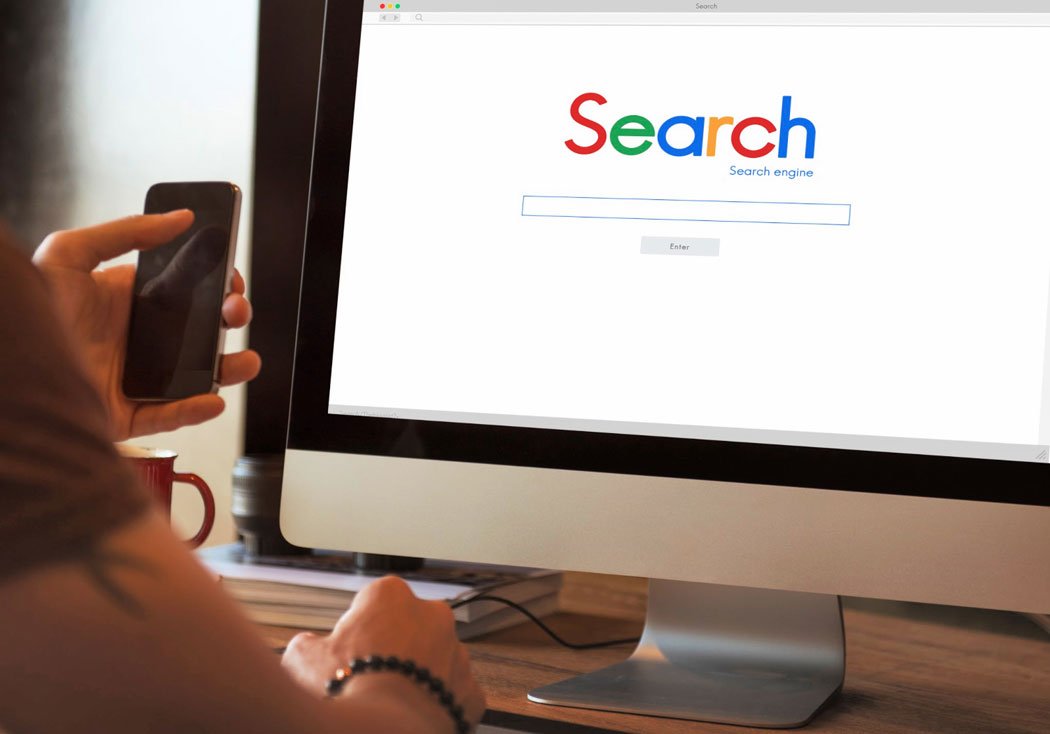Google AdWords is useful for many marketers, especially those who follow the rules to get the most conversions. However, the program can be financially punishing for ad campaigns rife with errors and mistakes.

To avoid wasting your ad budget, let’s take a look at the mistakes with the most potential to derail your campaign.
Not Targeting the Right Audience
Ad campaigns that get displayed to the wrong audience are doomed to fail. The most crucial thing to get right is only showing ads to people who are most likely to buy.
Fortunately, it’s relatively easy to accomplish this by using the robust tools that Google provides. Google AdWords has options for almost every type of audience targeting. The company also offers many resources for self-training to anyone who wants to master the craft.
Setting the wrong audience gets expensive because many people will click on ads, but very few will convert into a profitable sale.

Forgetting to Dial in Geographic Targeting
It’s a waste of time and capital to show ads to people who can’t buy the product. For local businesses with limited reach, they need to target only people in the nearby geographic area. Otherwise, the ads get distributed to too broad of an audience that isn’t likely to purchase, costing more of your budget.
There’s no good reason to pay for unqualified visitors. Since they won’t buy, it will merely run up the advertising tab. The better bet is to use the targeted geographic settings from the beginning. That way, your budget works for you, instead of just costing you.
Not Remembering to Set the Budget
Advertisers who aren’t mindful when setting their advertising budgets can be in for an unpleasant surprise.
The first thing you need to do is determine a daily and total budget that fits within your comfort zone. Capping your spending is a reliable safeguard that stops ad displays once the budget gets spent.
The fantastic news is that you can always increase your budget if the campaign is meeting your expectations and objectives. If not, you can shut it off indefinitely or permanently without going too deep into your pockets.
Not Separating Display and Search Campaigns
It’s worth the effort to split up search and display campaigns. The reason is that each campaign displays to different audiences. It’s easy to do and provides deeper insights into how each ad strategy is performing.
It’s worth researching the subtle differences between the two types of audiences. Search visitors tend to be “in the moment” and are often looking to make purchases. For that reason, Google may charge more for their clicks. Display network visitors may need further nurturing, which might prevent a marketer from wanting to pay too much for a click.
Create at Least One Ad Group for Your Brand
For best results, don’t forget to add your brand name to at least one group, or you won’t show up in branded searches.
Creating a group with branded searches shouldn’t cost that much extra, and that group should bring conversions. The people who take the time to add brand names to search queries are looking for that specific company’s product. They’re likely to buy direct from the source!
At the least, consider this type of grouping to offer defensive marketing options. If you don’t pick up the traffic, a competitor will, which can create consumer confusion.
Using Too Few Ad Variations for Groups
Selecting only one ad per group may not provide enough diversity in results.
It’s worth spending extra time to create ad variation to test which one performs best in the field. Many times it’s not the ad expected but a different variation that gets the most clicks or conversions.
Each variation could also test different variables, creating nearly-infinite possibilities.
Not Ensuring the Landing Page Matches the Ad
Nothing cuts into the potential profit for an ad that links to an unrelated landing page. Many amateur marketers forget to create specific landing pages, and this oversight hurts their conversion rate significantly.
Your best bet is to craft an optimized landing page that matches the intent of the visitor. An example would be an ad that offers a free white paper that leads to a page that prompts for an opt-in and then delivers the paper to the user. That experience is seamless and makes sense for the visitor. They’re likely to convert because the landing page matches the offer listed in the ad.
Ignoring the Importance of Using the Right Match Types
Choosing the best keyword match type for your campaigns helps with making profitable conversions from PPC Campaigns.
Broad matching is usually too expensive to be useful because it displays many vaguely related ads. Precise matching will promote the best conversion rate. Variations can generate very different results, so it comes down to aligning the matching type with the campaign objectives.
Putting Too Much Faith in Google’s Recommendations
It’s a mistake to trust every single Google recommendation. Although they may help, there are no guarantees their optimization tips will work well for your specific needs.
Don’t wholly overlook everything they say, but choose wisely. As always, what matters most is setting up tightly-defined campaigns with specific objectives in mind.
Google makes recommendations using AI-assisted research, so it’s worth understanding their rationale for making suggestions. However, it is up to you to differentiate the tips that apply to you and can help your campaign versus the ones that don’t.
Failing to Know the Customer Lifetime Value
The Customer Lifetime Value (CLV) is vital information that empowers you to run profitable Google AdWords Campaigns.
Google Analytics tracks the CLV and other crucial website and conversion metrics. Knowing what each customer is worth over the lifetime of their account empowers you to manage your budget more effectively.
When you understand the CLV of your clients, you can forecast profits and revenue and set a sensible budget for ads, most likely with a focus on products or services with a higher return on the initial ad spend.
Underestimating the Need for a Winning CTA
Any ad without a compelling CTA will struggle to earn high revenues and returns.
Your Call to Action is the element that gets the person to make their first commitment to the sales process. Without having a compelling CTA, chances are the clickthrough rates will underperform, as will sales results.
- Don’t be afraid to sell!
- Compel the visitor to take immediate action.
- Urgency is key.
- Customize CTAs by advertising networks, devices, and platforms.
- Make the benefit easy to understand.
It takes some time to create perfect CTAs, so experimenting with writing them makes sense. As you monitor campaigns, you’ll see which CTA’s bring the most significant results.
Not Making the Most out of Ad Scheduling
Scheduling ads makes a ton of sense, especially for local businesses with set operating hours.
There are certain times when people aren’t as active online. In these times, conserving your ad budget is a sensible decision. Ad scheduling is a simple way to reduce click costs while driving up conversion rates.
The best thing about ad scheduling is that you already know what your most productive hours are for advertising. If you study the patterns behind your sales, you can schedule ads to display when you’re most likely to score.
Using Too Small of a Budget for Too Many Campaigns
It pays to concentrate budgets on fewer winning campaigns rather than spreading your ad spend too thin.
The tendency to want to create lots of campaigns at once makes sense. It seems like a time-effective way to get results. However, if none of the drives are successful, there’s a chance of blowing through your budget quickly. As you might imagine, this can be demotivational, especially with unsatisfactory results.
Consider starting with one small campaign and refine it until you achieve your desired results. It might take some patience, but the money you save will come in handy after the ads are fully optimized.
Duplicating Campaigns Instead of Creating New Ones
Duplicating a campaign is a timesaver, but keep in mind that these campaigns lack historical data.
That’s a big deal because many marketers assume things work the opposite way. They figure their historical data will transfer to the new campaign, making their jobs that much easier.
Don’t get it wrong; duplicating campaigns can be useful if you have a successful one you want to launch with a new, targeted audience. It largely depends on what you wish to accomplish, but don’t let the idea of saving time cloud your judgment. There’s little doubt that campaign creation takes a great deal of effort to get the most conversions and not waste money on Google AdWords.
Don’t Forget to Add Negative Keywords.
Not adding negative keywords gets pricey quick. The reason? Because you end up paying for expensive but poorly-targeted keyword ads.
If you’re unfamiliar with the concept of negative keywords, this is a keyword that stops your ad from displaying based on a specific keyword or phrase. Sometimes, this also referred to as a negative match.
Choosing the Wrong Keywords Due to Shoddy Research
One of the most challenging aspects of Google AdWords is selecting the most appropriate keywords. Usually, you can use common sense to choose the best keywords and phrases relevant to your offer.
To avoid misspent ad budgets, always make sure to avoid misleading or inaccurate phrases that aren’t likely to convert.
Not Testing Bids Gets Costly
It pays to test bidding strategies to avoid overspending or running unrelated ads. Ultimately, what matters most is picking the bid that brings sales. It doesn’t matter if it’s $2 per click or .20 cents if conversions and sales rise.
Using a capped bid and conversion data, any marketer can quickly improve their campaigns with discipline and patience.
Not Getting the Most Value From Extensions
Google provides advertisers extensions to derive the most value from each ad.
These fields are often marked optional, so it’s easy to see why many people would quickly look at them and move on. However, that’s not a great idea because some of them are specific to industries and address crucial information that customers will want to know.
Not Trying the Experiments Feature
Google provides a way to run experiments to find the biggest ad winners.
They allow you to run up to five experiments per ad campaign. However, only one will run at a time.
You may allocate a specific amount of money you want to experiment with on a “per campaign” basis. These experiments are easy to run and will show you which version of your ad performs best. Once you know, you can divert your budget from the poorly-performing ones to the winners.
Missing out on Remarketing
Running a successful online advertising campaign requires a multiprong and ongoing approach.
Remarketing offers advertisers a way to re-connect with people who have previously engaged at your site. It’s flexible, affordable, and leads the way in conversion optimization tactics. Check out our detailed article on how to put remarketing to use to juice your sales.
You may start small, with a list of site visitors to target, and then create as many remarketing lists as needed. Each one gives you additional power because it shows you who your audience is and what interests them the most.
In Summary
Google AdWords gives advertisers many tools and settings to refine to their needs. While the program is challenging to learn, it’s mighty. It could take time to set things up correctly, but doing so brings in sales online effortlessly.
The hard work in campaigns happens upfront. Once they’re running, it’s trivial to make adjustments to maximize results. Monitoring results and evaluating the numbers is the best way to turn an average campaign into a tested winner.
If you’re interested in riding on the success of a Google advertising program, but you don’t have the time or the interest to learn the skills needed to launch your business to the next level, you can always contact an experienced agency to help you achieve your online objectives.

